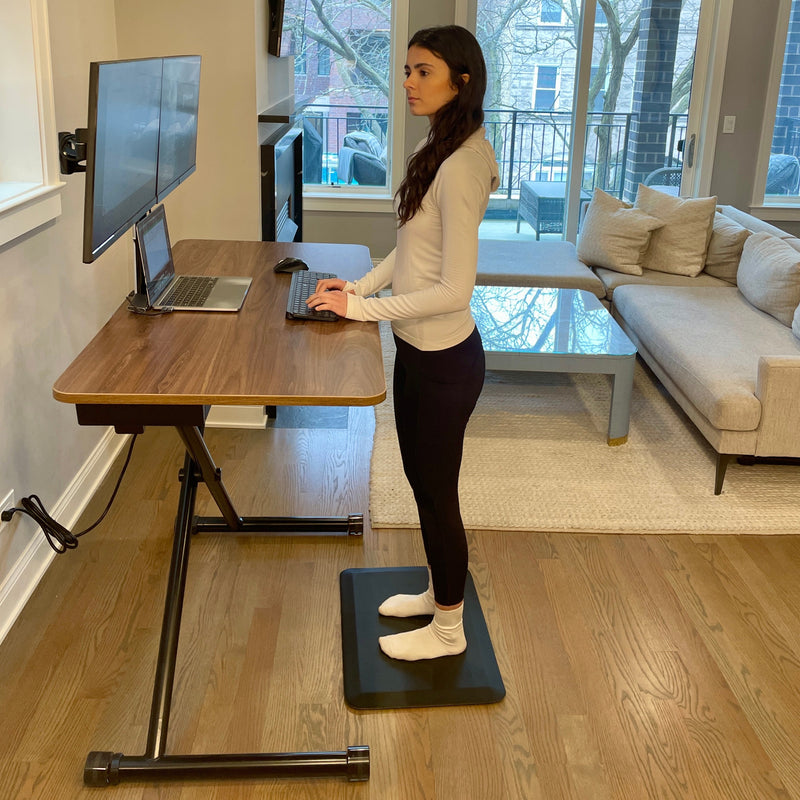Quick Ways to Tell If Your Chair Is Ergonomic Quick Ways to Tell If Your Chair Is Ergonomic
Have you ever sat in a chair and wondered why your back hurts even after just an hour? It’s not just bad luck or bad posture—it might be your chair. Not every chair is built to support your body the right way. And when you’re spending hours working, studying, or even gaming, that support matters big time. That’s where knowing a few ways to tell if your chair is ergonomic comes in handy. It’s not about fancy labels—it’s about how your body feels and functions.
Let’s walk you through it so you can spot the good from the not-so-good, without needing to be an expert.
Check How Your Back Feels After Sitting
Your back should feel like it’s being gently held—not forced into a straight line or left dangling. That’s one of the simplest ways to tell if your chair is ergonomic. The backrest should follow the shape of your spine, especially around the lower back, where your natural curve is. If it pushes your spine too far forward or gives you no support at all, it’s not doing its job.
Here’s how to quickly spot it:
- Sit back all the way and relax. If there’s a small gap at your lower back, that’s not good.
- Try adding a cushion. If that suddenly makes the chair feel better, it’s missing proper lumbar support.
- A good ergonomic chair hugs your back, especially at the base of your spine.
Keep in mind, when your back feels supported, you’re less likely to slouch. And slouching is one of the fastest ways to end up with long-term back pain. Paying attention to back support is one of the clearest ways to tell if your chair is ergonomic, and your body will thank you for it.
Notice Where Your Feet and Knees Are
Feet flat on the ground. Knees at the same height as your hips. Sounds simple, right? But if your feet are dangling or your knees are pushed up, your chair’s height isn’t right—and that means it’s not ergonomic for you.
To check:
- Sit all the way back and see if your feet touch the floor comfortably.
- Look at your knees. They should be at a 90-degree angle—not too high or low.
- If you need a footrest, your chair might be too tall.
These clues are easy ways to tell if your chair is ergonomic, especially if you’re shorter or taller than average. Ergonomics is personal. The chair should adjust to you—not the other way around.
Test the Armrests (Or Lack of Them)
Armrests are often ignored, but they play a huge part in comfort. If your shoulders are creeping up or your arms are just hanging with no support, your neck and back are going to feel it.
Armrest checkpoints:
- Can you rest your elbows comfortably without shrugging your shoulders?
- Are your arms forming an L-shape while typing?
- Can the armrests move up, down, or in and out to suit you?
Arm support is one of the less obvious ways to tell if your chair is ergonomic, but it makes a big difference. The right armrests take pressure off your shoulders and help your wrists stay straight. That can reduce strain, especially if you’re at your desk for hours each day.
See If the Seat Pan Supports Your Hips
The seat pan is just a fancy way of saying the part you actually sit on. It should be wide enough and deep enough to support your hips and thighs without cutting off circulation or making you lean forward.
Here’s what to check:
- There should be a 2-3 finger space between the edge of the seat and the back of your knees.
- If your thighs feel squeezed or unsupported, the seat is either too short or too long.
- Cushioned seats help—but if it flattens too quickly, that’s a red flag.
This part may seem small, but it’s one of the less-known ways to tell if your chair is ergonomic. Without proper hip support, you’ll shift around constantly, which messes with your posture and focus.
Evaluate Adjustability (This One’s Big!)
A chair that can’t adjust to your body? That’s like wearing shoes two sizes too big. The most trusted ways to tell if your chair is ergonomic almost always include adjustability.
Here’s a checklist of what a quality ergonomic chair should offer:
| Feature | Why It Matters |
| Seat Height | Fits people of all sizes |
| Backrest Tilt | Lets you lean without straining |
| Armrest Movement | Helps you keep arms and wrists relaxed |
| Lumbar Adjustment | Supports the natural curve of your back |
When your chair can adjust to fit you, it reduces the stress on your body. And that flexibility makes a massive difference in comfort throughout the day. Even better? You can check out adjustable seating options through this beautifully curated chair collection—built with real comfort in mind.
Pay Attention to How You Feel After Using It
The best test isn’t technical—it’s how your body feels after using the chair for a full day. That’s one of the most honest ways to tell if your chair is ergonomic. Do you feel sore, tense, or stiff? Or do you get up feeling fresh and ready to move?
Look out for these signs:
- No back, neck, or shoulder pain after sitting for a few hours
- You’re not constantly shifting or fidgeting
- Your posture naturally feels upright without forcing it
A great ergonomic chair doesn’t just feel comfy—it keeps you balanced and relaxed. If your current chair leaves you feeling wrecked at the end of the day, it might be time to upgrade your comfort game.
Common Signs Your Chair Isn’t Ergonomic
Let’s quickly sum up some everyday red flags. These are clear ways to tell if your chair is ergonomic—or not:
- Constant fidgeting or readjusting
- Numb legs or sore hips
- Slouching or leaning forward often
- Shoulder or neck pain
- No adjustability in height, armrests, or tilt
And here’s a simple A-Z reference list to remember:
A – Armrests adjust to your needs
B – Backrest hugs your spine
C – Cushion supports without sinking
D – Depth of seat matches your legs
E – Elevation adjusts so feet touch the floor
F – Flexibility to move naturally
Noticing any of these? It’s a good idea to check out affordable, stylish, and ergonomic furniture that’s actually designed to keep your body feeling its best.
Final Word
You don’t need a big manual or a fancy certificate to figure out if your chair is ergonomic. You just need to listen to your body and look for these little signs. From back support and seat depth to adjustability and posture comfort, these are all ways to tell if your chair is ergonomic that anyone can check on their own.
And if your current chair isn’t quite cutting it? There’s no need to settle for discomfort. Take a look at options made for real people who want to sit well, work better, and feel good—without spending a fortune.






